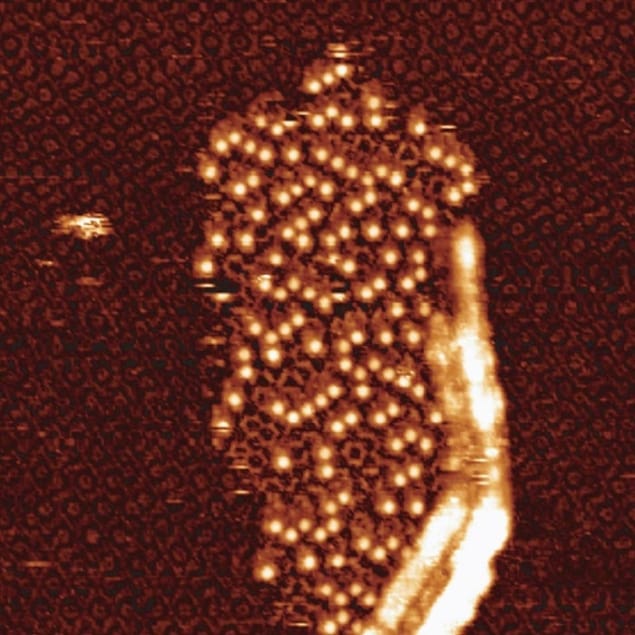
The self-assembly of artificial 3D nanostructures on a surface has been achieved for the first time, claims a team of researchers in the UK. Until now, such assembly was only possible in 2D and the scientists say that the new technique could be useful for creating molecular computers and information storage devices of the future.
Self-assembly is an attractive bottom-up method for fabricating nanostructures. It is simple and quick, and does not require expensive equipment or extreme conditions. Until now, however, the technique has only been used to make simple periodic structures and making more complex architectures remains a major goal in nanotechnology today.
Introducing a guest molecule
Neil Champness and Peter Beton’s team at the University of Nottingham has now used self-assembly to build molecules upwards and outwards from a surface by introducing a “guest” molecule onto the surface. When additional “host” molecules are then added, these spontaneously arrange themselves around the guest, forming stable extra layers around the molecule.
“It is the molecular equivalent of throwing a pile of bricks up into the air and then as they come down again they spontaneously build a house,” said Champness in a University of Nottingham press release. Before now, the molecular “bricks” could only form flat structures – like patios or paths in the house building analogy.
The Nottingham team employed carbon-60, or buckyballs, as the guest molecules. The researchers introduced the C60 onto a surface patterned by an array of host tetracarboxylic acid molecules. These molecules provide an array of nanopores that are stabilized by hydrogen bonding and they can selectively trap other simple molecules, like C60.
Reversible process
Because the C60 is a spherical-shaped structure, the acid molecules assemble around it, forming a 3D network. The technique is a completely new way to build up additional layers around a molecule, says Champness. The self-assembly process is also reversible – for example, by adding planar molecules such as coronene that displace the C60.
“Our work opens up the possibility of preparing increasingly complex molecular arrangements, whose organization can be controlled,” he told physicsworld.com. “This means that the interactions between the molecules, be they magnetic, optical or electronic, can be controlled – something that will be essential for applications in which intermolecular interactions are important.”
Magnetic and electronic functionality
The team would now like to extend its work to create structures that assemble into larger arrays away from the surface, and introduce functionality – such a magnetic and electronic properties – into the arrays.
Ultimately, the technique could help to build new responsive materials with potential for sensing and possibly data storage, added Champness. “Such applications of our work are still a long way off though!”
The results were published in Nature Chemistry.



